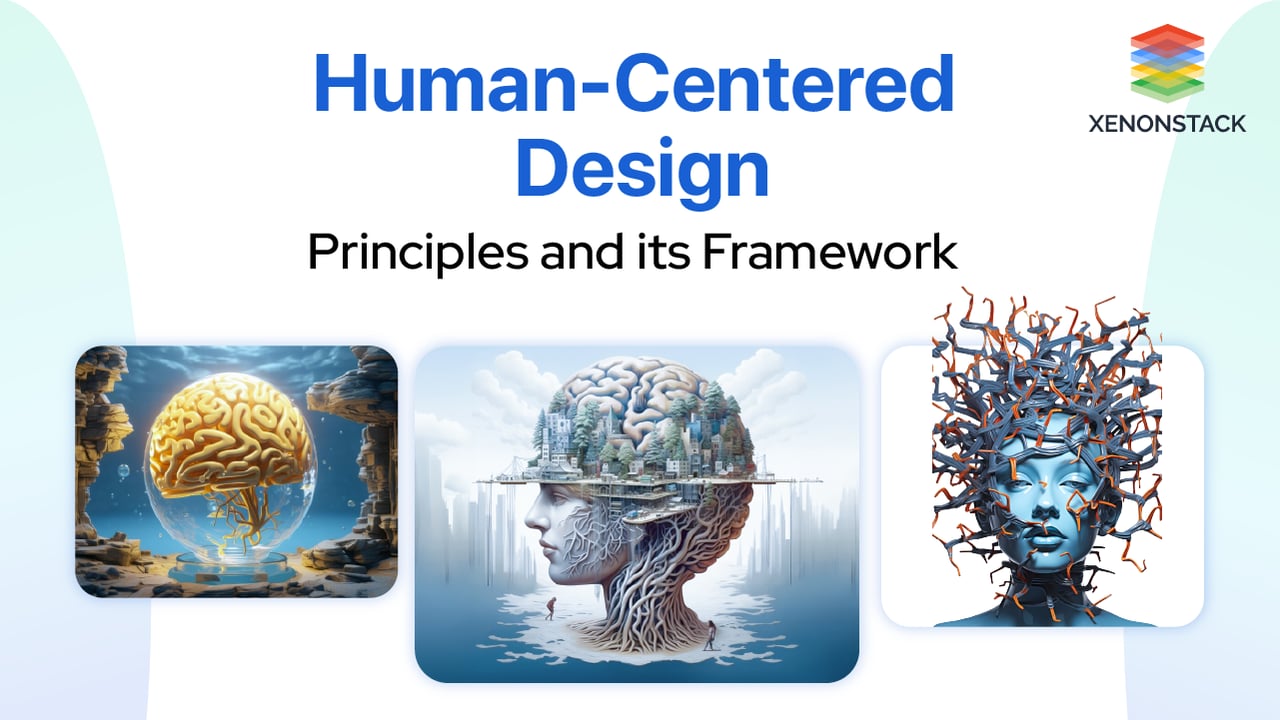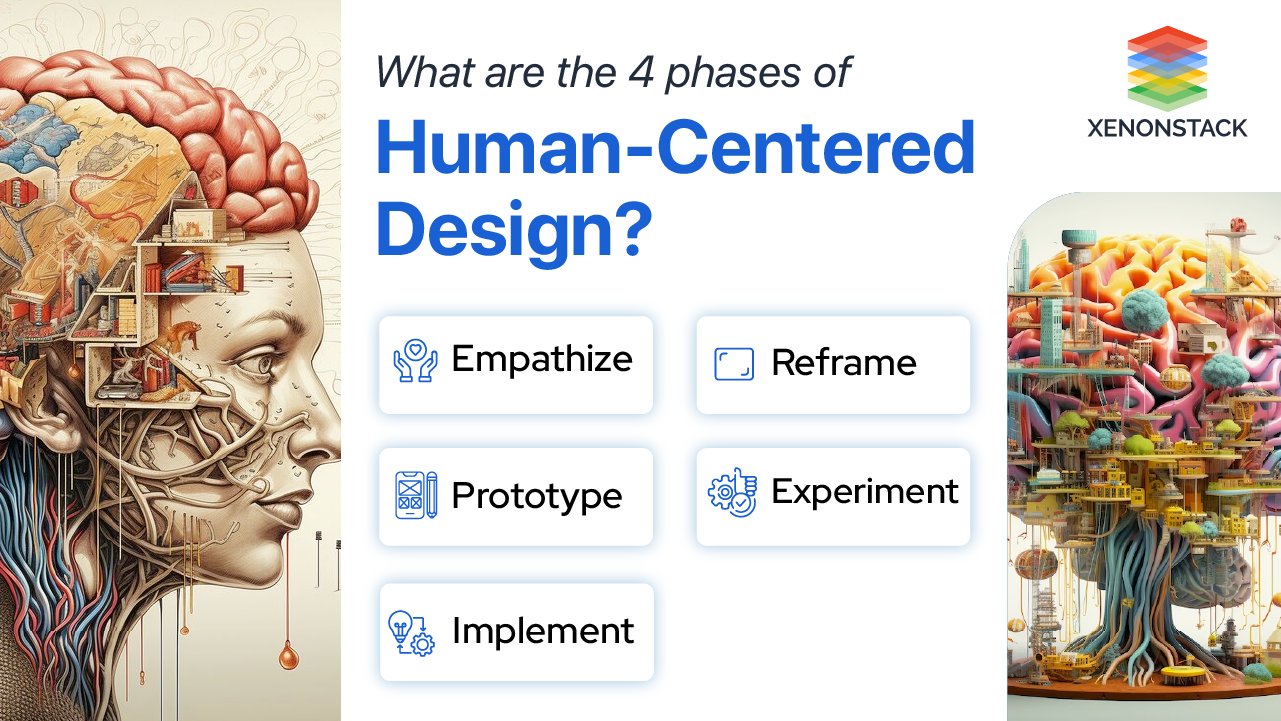
What is Human-Centered Design?
Human-centered design is an idea that allows an individual or a group of people to design so that it addresses real-world customer problems. It addresses the core requirements of Customers. It motivates people to Design Products, Services, Systems, etc., according to customer feedback and needs. It is a process of discovering user requirements within a network to develop a finer user experience.
- First, Let's get an idea about the customer's needs or requirements.
- Secondly, we can focus on the real problems and experiment with solutions based on them.
- Lastly, we can give a final solution to the customer's problem after the iterations & experimentations.
What is the significance of adopting a Human-Centered design approach?
Human-centered design prioritizes the user above all else, resulting in a functional product that users can effortlessly utilize. By cultivating a deep sense of empathy for the individuals you are designing for, you will be able to generate innovative ideas that have a profound impact on their lives. Additionally, this design framework can aid your company in exploring potential applications, such as creating new products for existing markets or identifying new markets for existing products. By maintaining a close connection with your users, you can effectively monitor and adapt to their evolving needs. Ultimately, adopting a human-centered approach allows customers to feel truly understood, fostering increased customer loyalty. When customers perceive themselves as active participants in the design process, the product gains a newfound significance, leading to a greater commitment to its utilization.
What are the guiding principles of this approach?
Human-centered design (HCD) refers to the approach adopted by product designers to ensure that their designs are tailored to meet the needs and preferences of people. HCD emphasizes the integration of the human perspective throughout the entire problem-solving process, resulting in effective solutions. It is crucial to understand that all designs should prioritize being human-centered. This goes beyond simply being user-centered or user-friendly since users are, ultimately, human beings. However, human-centered Design entails considering not only the end user but also every individual impacted by the design choices made. Now, let us delve into the principles that underpin this approach.
1. Concentrate on People
When designing, it is crucial to always take into account the individuals who will be utilizing your product. These individuals are not just abstract 'users', but real people who will interact with your product to accomplish their objectives. It is important to remember that your product serves as a tool to assist them in achieving their goals more efficiently. The process of identifying your target market begins with a simple question: who is this product being built for? Unless you are creating a product for yourself, it is necessary to first consider your target market
- Who will be the target market for this product?
- What circumstances (such as time, place, device, etc.) are most likely to occur
- Once you have defined your target users, it is essential to work out the crucial user journeys.
2. Identify and Tackle the Correct Issue
You must go into the real world of application. Observe the environment you're developing, pay attention to the people in that area, and speak with people in that domain. This could involve standing in a store and observing how people buy similar items. It could involve speaking with the shop's employees. It requires a thorough understanding of the competition. You must conduct research, and if you are unable to do so, keep in mind that you are at the very least competing for people's time and attention. Throughout your study, you'll need to ask smart, naive questions. You'll need to discard all of your assumptions and replace them with verified knowledge. Being sure that you know everything isn't going to help you achieve that goal.
Of course, performing research and discovering basic issues take time, and product teams frequently complain that they don't have enough. On the other hand, identifying essential difficulties should be an unavoidable aspect of the design process, regardless of how long it takes. If designers skip this stage, they may attempt to solve the wrong problems.
3. Iteration and Experimentation on Design
-
Prototyping is one of the most critical aspects of designing a human-centered Design because it allows you to test your idea on real people. This isn't necessary to use complicated prototypes. "What is the simplest thing I can do to test my thinking?" ask yourself. This could be a simple drawing, sketch, or paper prototype.
-
You might need to take a step further and develop a mock-up. There are numerous resources available, so depending on what you want to study, you should be able to discover something that meets your needs. Instead of creating your ideas in a vacuum, prototyping forces you to discuss them. Seek out others who could have a different perspective on things to help you validate your own.
After numerous iterations or feedback, test the results with real users.
4. Consider everything in perspective of the System
-
Human-centered design forces us to focus on all the aspects of the user journey. Always keep the big picture in mind: what you want your users to accomplish with your product and what is the result that matters to you.
Imagine a payment system application with a good user interface and design. When a transaction fails, and money is deducted from the bank if it won't show the right message to the user, the overall experience of the application gets impacted.

What are the 4 phases of Human-Centered Design?
Human-centered design (HCD) typically follows a cyclical and iterative process with various phases. While the specific names and number of phases may vary slightly depending on the source, the essence of HCD remains consistent. The four phases you mentioned align with the general framework, but they are often articulated as follows:
-
Empathize/Define: This phase involves understanding the needs and perspectives of the users. It includes activities such as conducting user research, interviews, and observations to gather insights into the users' experiences and challenges.
-
Define/Reframe: This phase involves synthesizing the information gathered during the empathize phase to define the core problems and needs of the users. It may also include reframing the problem statement based on a deeper understanding of user needs.
-
Ideate/Experiment: In this phase, creative solutions are generated to address the defined problems. It's about brainstorming and coming up with a wide range of ideas. Experimentation can involve creating low-fidelity prototypes, conducting pilot studies, or exploring different concepts to see what resonates with users.
-
Prototype & Test: Prototypes are developed based on the ideas generated during the ideation phase. These can be low-fidelity or high-fidelity representations of the proposed solutions. Testing involves getting feedback from users by exposing them to the prototypes. The goal is to gather insights on what works and what doesn't.
Implement: Once a solution has been refined through testing and iterations, it is ready for implementation. This phase involves scaling up the solution for a broader audience and integrating it into the intended context.
1. Define
This is the stage where you immerse yourself in your consumers' lives to understand better who they are.
-
Observe and inquire about having a better understanding of their perspective.
-
Identify your prejudices and assumptions so you can change them if they don't match the reality of your users.
-
Consider this to be foundational research.
To begin, you must first identify the appropriate individuals. Age, ethnicity, technological expertise, and other characteristics should all be considered. Make sure your sample is all-inclusive. Interviews or focus groups with users and field specialists may be conducted at this stage.
2. Experiment
After you've identified your users and completed your research, the following step in the Define phase is to synthesize the information and make sense of what you've discovered.
Affinity mapping is one of the most used strategies for synthesizing findings. Everyone writes their observations on individual sticky notes, which are then grouped to establish themes. After completing your synthesis, you'll turn your themes and insights into design opportunities by brainstorming as many ideas as possible. During brainstorming, there is no judgment. You are free to come up with as many ideas as you like, and they can be wild and insane.
3. Prototype and test
After brainstorming, next, you will plan to create prototypes. The prototype is simply an experimental modal of a given solution. You repeat the process until you have a product that you're ready to move forward with after implementing the feedback and iterating on your prototype.
4. Implement
At this stage, your product is prepared for release to the customer or market. Following this, you will continue to iterate and refine it based on the latest market demands. The process of design is an ongoing and perpetual endeavor.
The primary emphasis on human-centered design
The primary focus of Human-Centered design lies in prioritizing the user or customer. At Xenonstack, our utmost priority is the customer, and we adhere to the principles of Human-Centered design to effectively tackle real-world customer issues.
- Click to learn about What is Human-Centered AI and Its Design Principles?
- Explore our Visual Design Principles and its Elements | Ultimate Guide
.webp?width=1921&height=622&name=usecase-banner%20(1).webp)



